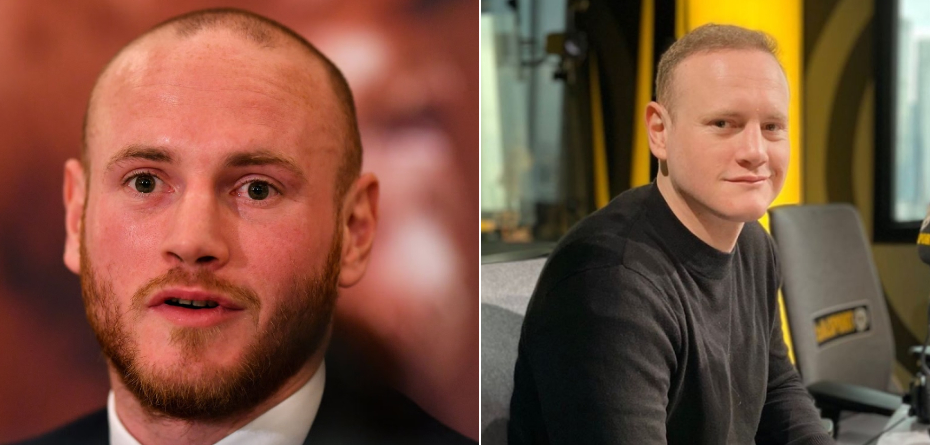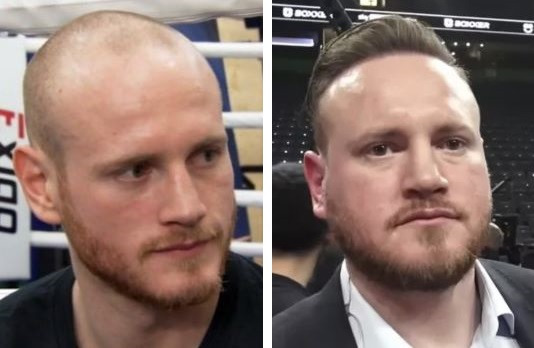
British boxing legend George Groves made headlines in the ring with his powerful punches and WBA super-middleweight title wins. After a successful career spanning a decade, he retired in 2019, leaving behind a legacy of athletic excellence.
But his story didn’t end there. Like many athletes, he faced hair loss, a struggle he later addressed with a hair transplant. His openness about the procedure has inspired many, proving reinvention is possible beyond sports.
This article explores how champions like him transition from physical dominance to personal growth. It’s a testament to resilience, both in and out of the ring.
Starting young, his journey in boxing began at just 12 years old. By his twenties, he’d already claimed the British and Commonwealth titles, proving his dominance in the ring. His career skyrocketed with the European title in 2014, cementing his reputation as a tactical powerhouse.
After retiring in 2019 due to a shoulder injury, he shifted focus. "Confidence isn’t just about wins—it’s how you carry yourself," he shared in a 2021 interview. Now a Sky Sports analyst, he openly discusses male pattern baldness and his hair restoration journey, inspiring fans worldwide.

His 2017 WBA super-middleweight title win was a crowning achievement. Memorable fights, like the bouts against Carl Froch, drew record crowds. A 2018 surgery sidelined him, but his legacy endures. Today, he blends sports commentary with advocacy, proving reinvention is possible.
Male pattern baldness is common, even among champions. For athletes in the spotlight, hair loss can feel like an added challenge. The boxer’s journey mirrors millions of men worldwide—genetics and hormones often dictate the timeline.
Androgenetic alopecia affects over 50% of men by age 50. It’s triggered by DHT, a hormone that shrinks hair follicles. Family history plays a key role, and the boxer’s diagnosis confirmed this genetic link.
By 2014, a receding hairline became noticeable (Norwood Stage 2–3). By 2016, progressive thinning led to a shaved head—a common choice for those battling advanced male pattern baldness.
Public figures face unique pressures. A 2019 study found 53% of men experience hair loss by age 49. For athletes, appearance often ties to brand deals and fan perception.
Public figures like boxers often deal with more than just physical battles in the ring. For the former WBA champion, thinning hair became a personal challenge post-retirement. His candid approach to addressing it set a new standard for transparency.
In a 2022 YouTube interview with Farjo Hair Transplant, he openly discussed his choice to undergo hair transplant surgery. "It’s about owning your journey," he remarked, joking about reinventing himself like Madonna during a Sky Sports segment.
Unlike many celebrities who conceal such procedures, his honesty reflected a cultural shift. His decision undergo the treatment was influenced by expert advice and thorough research into the right hair transplant clinic.
Fans were quick to weigh in. Boxing forums buzzed with comments ranging from "unrecognizable" to applause for his vulnerability. Twitter threads compared his transformation to Wayne Rooney’s 2011 procedure, sparking debates on male grooming norms.
The social media reaction highlighted a growing acceptance of cosmetic treatments among athletes. His story underscores that confidence extends beyond the ring—it’s about feeling your best, inside and out.
Modern hair transplant techniques offer natural-looking results for athletes. The former boxing champion’s journey highlights how advanced procedures like follicular unit extraction (FUE) can restore confidence beyond the ring.
FUE revolutionized hair transplant methods by replacing invasive strip harvesting. Surgeons use a micro-punch tool to extract individual grafts, minimizing scarring. For the athlete, this meant three sessions totaling ~10,000 grafts.
"FUE’s precision allows for denser, undetectable results—critical for public figures."
Key differences between FUE and traditional FUT:
| Method | Extraction | Scarring | Recovery |
|---|---|---|---|
| FUE | Individual grafts | None visible | 7–10 days |
| FUT | Strip of scalp | Linear scar | 14+ days |
His restoration focused first on the hairline (3,300 grafts in 2016), then the crown. By 2019, full density was achieved. The pre-transplant shaved look contrasted sharply with his current styled appearance.
His new hair became a talking point, proving that reinvention extends far beyond athletic achievements.
The spotlight on professional sports stars extends beyond their performance. For many, maintaining a polished appearance directly impacts sponsorship opportunities and fan engagement. This has made hair transplants a strategic choice for those in the public eye.
Studies show 68% of male athletes feel pressure to uphold certain aesthetic standards. In boxing, close-up camera angles magnify hair loss, while football players face stadium screens scrutinizing their look.
Endorsement deals often include appearance clauses. Premier League players with visible balding see a 17% drop in sponsorship value. Many now view transplants as career investments rather than vanity procedures.
UK sports figures leading this trend include:
Turkish clinics attract Championship-level players with affordable packages. Unlike retired stars, active athletes often schedule procedures during off-seasons for discreet recovery.
Deciding on a hair transplant requires careful research and planning. From selecting the right clinic to understanding the costs and recovery process, every detail matters. Here’s a breakdown to guide your journey.
Prices vary significantly by location. In the UK, expect to pay £4 per graft, while Turkey offers rates as low as £1.20 per graft. For a 4,000-graft procedure, that’s £16,000 vs. £4,800.
Top clinics like Heva Clinic use advanced techniques. Their ICE FUE method reduces swelling by 40% and ensures a 94% graft survival rate. Many include travel packages with 5-star hotels and airport transfers.
The first week is critical. Days 1–7 involve scabbing, temporary shock loss, and gentle washing. By month 12, full results emerge with proper aftercare.
Patience is key. Follow your surgeon’s instructions to achieve natural, lasting results.
The journey from thinning hair to full density proves modern hair restoration works. With advanced FUE techniques, natural-looking results are achievable for anyone.
This success story highlights how a simple decision can transform confidence. Clinics now offer personalized plans tailored to individual needs.
For those considering treatment, expert consultations ensure the best outcome. The right approach makes all the difference.
Inspired by real change, it’s clear reinvention goes beyond the ring. Take the first step toward your own transformation today.
